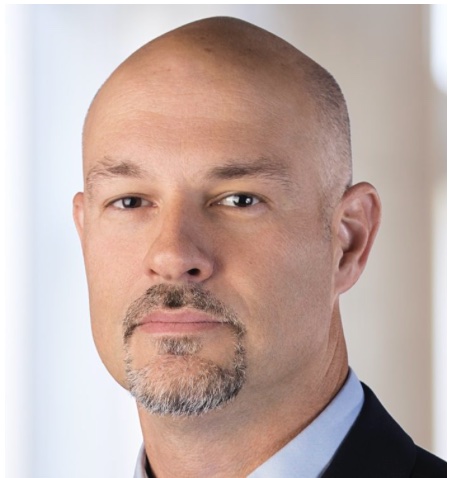Western Digital CEO David Goeckeler told to investors this week that the company had fallen behind in disk drive tech so he decided to restructure the exec leadership.

Goeckeler explained at the Morgan Stanley 2022 Technology, Media & Telecom Conference: “I’ve spent the last two years kind of rebuilding Western Digital, the executive team, the way the company is structured, all kinds of things… we spent a lot of time over the last two years, really getting the right leadership in place and getting the structure put in place in the company [so] that we could really produce and get the most out of the franchises we have.”
That’s the hard disk drive (HDD) and flash (SSD) business units inside WD.
He continued: “We split the product portfolio in two, put business units in place, brought general managers in so they could really focus on executing and driving the right roadmap decisions for the portfolio. And I feel like our technology roadmap is just in a vastly better position.” The two general managers are Robert Soderbery for flash and Ashley Gorakhpurwalla for HDDs.
WD and Kioxia JV
On arriving at WD, Goeckeler found that the flash foundry joint venture with Kioxia had relationship problems. Previous CEO Steve Milligan had overseen contentious legal wrangles with Toshiba as it tried to spin off its foundry business.
Goeckeler told the conference: “I have invested quite a bit in making sure that this relationship is very, very strong. And it is, I mean, on an engineering basis, you probably wouldn’t know that there’s two different companies… I talk to my peer [Kioxia CEO Nobuo] Hayasaka every couple of weeks and make sure we’re really tightly engaged on what is a very, very important relationship for both of us.”
SSDs

Goeckeler also disclosed at the event that the latest BiCS5 112-layer 3D NAND technology has proved very capital-efficient, saying WD “can use a lot of the same tooling in the fab that was used for BiCS4,” the previous 96-layer technology. More than half the bits coming out of the fabs are now built with BiCS5 technology.
He said: “Our client SSD portfolio is very strong, [in a] very good position… There’s been a complete transition of… our client hard drives to client flash… The company has played that transition extremely well… We have a strong position in consumer. It’s always good to have a captive franchise in your portfolio. The SanDisk brand is very, very strong. We have a strong position in mobile. Gaming has been very good for us. But the one pillar of the portfolio that we needed to build out was enterprise SSD… it’s an important TAM [total addressable market].”
Unlike the client drive area, where flash cannibalization is pretty well complete, HDDs in the datacenter remain strong, with nearline drives dominating. WD has found it hard going in the enterprise SSD market but is making progress. Goeckeler said: “We build our own controller. It’s been a big goal of mine since I came here and I think, really, calendar year ‘21 was a breakthrough for us.”
He said: “We started the year with… our first qualification at one of the big web-scale players. We deployed throughout the year at that player. As we went throughout the year, we qualified at the second and the third and then also two big enterprise OEMs in the storage space.
“It’s a multi-step story. The qualification is the big piece of that and we feel very good about where we’re at.”
The recent chemical contamination incident has caused a $250m loss of production. Prices are going up and Goeckeler is selling bits in more expensive devices: “We don’t have as much volume as we used to. So we’re going to mix it in a way that has the most value.”
HDDs

Goeckeler admitted WD failings at the 16TB drive level, saying: “We fell behind… I don’t think that’s a secret. I’ve been very open about that.”
WD is now back on a par with competitors Seagate and Toshiba, regaining parity at the 18TB level, according to the CEO. ”Our big focus on 18 was to get back on our front foot and lead that capacity point, which we did.”
The company has used its NAND technology to increase HDD capacity through higher track density with its OptiNAND drives. A 20TB drive is sample shipping and there is a roadmap out to 30TB through using microwave-assisted recording (MAMR), after which HAMR technology will be needed.
Another track density increase tech, shingled magnetic recording (SMR), which slows down data rewrite speeds and needs drive or host system software management, is becoming more popular with customers and important to WD. Goeckeler said: “We’re seeing customers now really start to adopt that.”
He explained: “SMR is going to give you 10 percent to 20 percent more capacity on a drive, and when the drives get to 20 terabytes, that’s significant. And we’re seeing very good adoption now on SMR, where if you go back a year ago, it wasn’t quite there.”
Overall Goeckeler doesn’t expect WD to be hit by component supply shortages as a result of Russia’s invasion of Ukraine. He was asked: “Any issues with Ukrainian supply chain whether neon gas, palladium from Russia, anything like that, that you can see impacting you?”
He replied: “No, we’ve looked at this very, very closely. It’s obviously a very tragic situation. But from our business perspective, we’ve got multiple suppliers for any gases and very low risk.”
Comment
The Goeckeler medicine is working. WD has healed relations with Toshiba/Kioxa and he’s helped the disk drive business to recover. If he can build up the enterprise SSD business as well then WD should be in great shape for the future. Goeckeler was not asked about supplying flash to the automotive sector but we don’t suppose he and Soderbery are going to let that market escape their attention.








